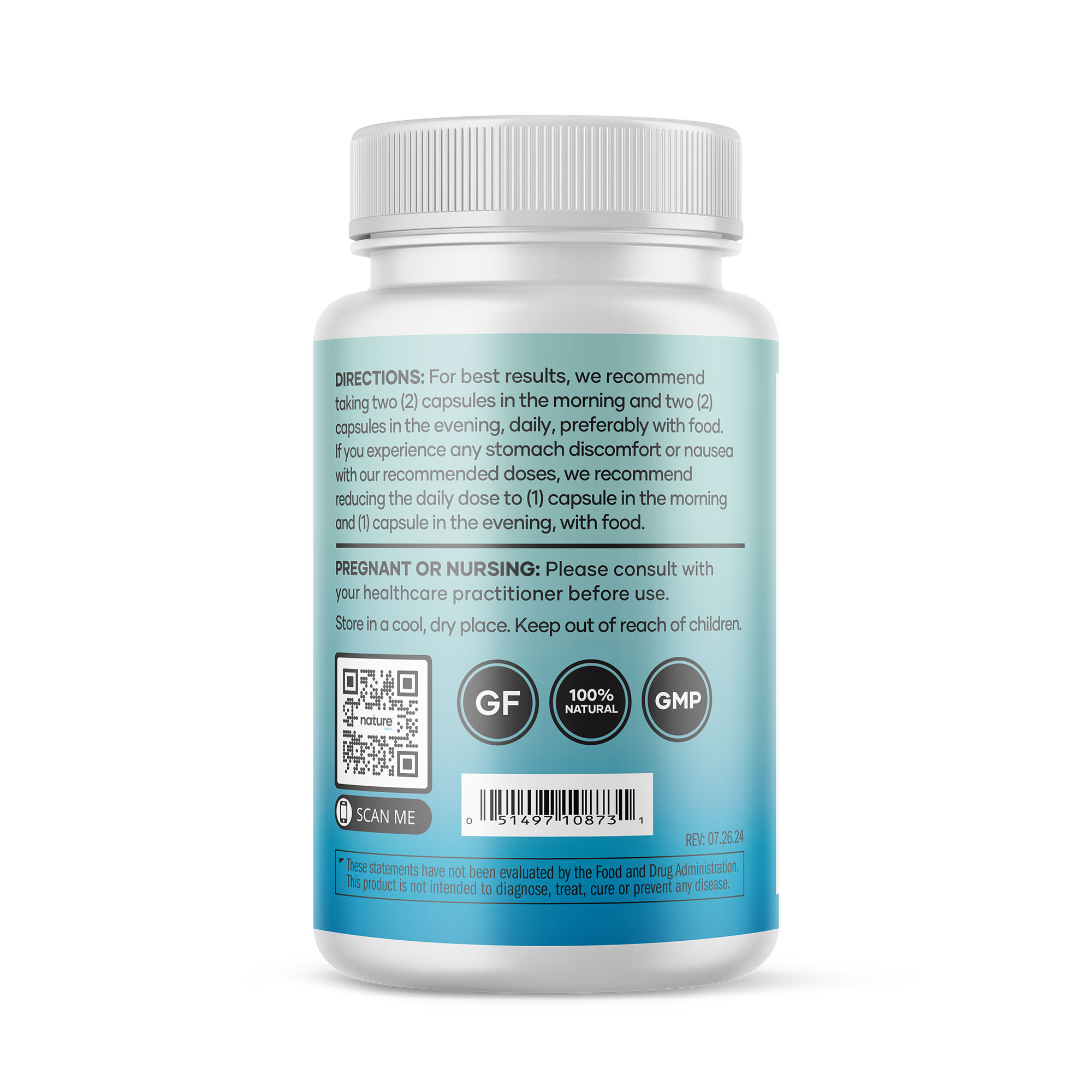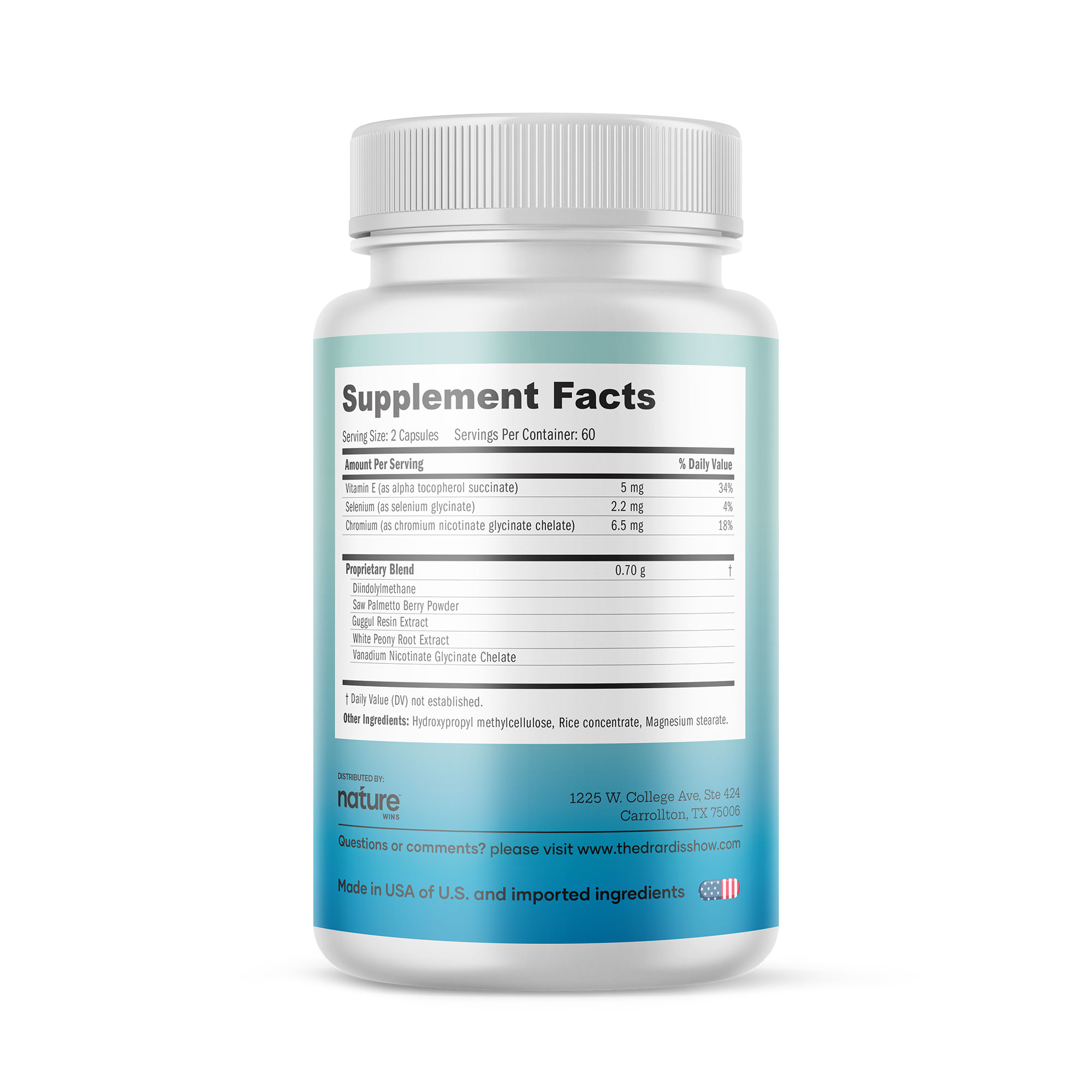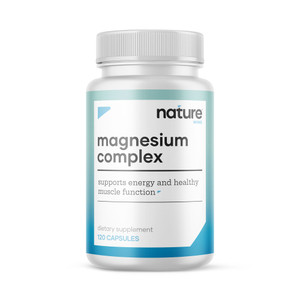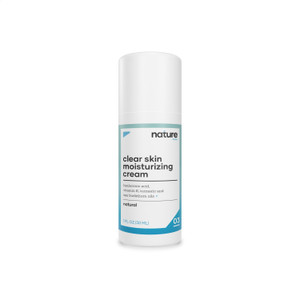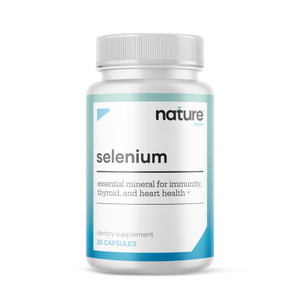Clear Skin Complex Ingredient Highlights Info
DIM (Diindolylmethane)
The Anticancer Agent 3,3'-Diindolylmethane Inhibits Multispecies Biofilm Formation by Acne-Causing Bacteria and Candida albicans
“DIM at 0.1 mM successfully inhibited multispecies biofilm formation by C. acnes (bacteria that causes acne), S. aureus, and C. albicans.”
“Our findings show that 3,3'-diindolylmethane offers a potential means of controlling acne vulgaris and multispecies biofilm-associated infections due to its antibiofilm and antibiotic properties.”
https://pubmed.ncbi.nlm.nih.gov/35107361/
------------
Hormonal Regulation In PCOS Using Acupuncture And Herbal Supplements: A Case Report And Review Of The Literature
“We present the case of a young woman with a strong preference for a natural approach to her care who presented with PCOS manifesting in menstrual irregularity, acne, and hirsutism.”
“…over a 10-month period. The patient regained menstrual cyclicity, and clinical and biochemical hyperandrogenism normalized. This report underscores the need for an integrative approach to the management of multifactorial disorders such as PCOS and highlights the basic science and clinical data supporting the use of acupuncture, Vitex agnus-castus, and diindolylmethane in patients with this condition (PCOS and Acne).”
https://pubmed.ncbi.nlm.nih.gov/32549844/
------------
Guggul Resin Extract
Nodulocystic Acne: Oral Gugulipid versus Tetracycline (Antibiotic)
“Twenty patients with nodulocystic acne were randomly allocated to one of two treatment schedules: 1) Tetracycline 500 mg or 2) Tab. Gugulipid (equivalent to 25 mg guggulsterone). Both were taken twice daily for 3 months, and both produced a progressive reduction in the lesions in the majority of patients.”
“With tetracycline, the percentage reduction in the inflammatory lesions was 65.2% as compared to 68% with gugulipid; on comparison…”
“An interesting observation was that the patients with oily faces responded remarkably better to gugulipid.”
https://pubmed.ncbi.nlm.nih.gov/7798429/
------------
Guggulipid: A Promising Multi-Purpose Herbal Medicinal Agent
“Guggul has been used for thousands of years in the treatment of arthritis, inflammation, obesity, cardiac protection, anti-ulcer, anti-epileptic and disorders of lipid metabolism.”
https://pubmed.ncbi.nlm.nih.gov/32110820/
------------
Saw Palmetto Berry Extract
“Saw Palmetto blocks testosterone-to-DHT conversion, which means it protects pimple breakouts and hormonal hair loss (in both men and women). Saw Palmetto also has skin-hydrating and anti-aging effects.” -Dr Bryan Ardis
Clinical and instrumental study of the efficacy of a new sebum control cream
“To evaluate the efficacy of a sebum control cream containing polyphenol-rich extract from saw palmetto, sesame seeds, and argan oil in subjects with oily facial skin.”
“A visible sebum-regulating efficacy was reported in 95% of them. After 4 weeks of treatment, the clinical assessment scores decreased by 33%. There was a significant reduction in the casual sebum level by 20% and area covered with oily spots by 42%.”
https://pubmed.ncbi.nlm.nih.gov/17524128/
Saw Palmetto blocks testosterone-to-DHT conversion, which means it protects pimple breakouts and hormonal hair loss (in both men and women). Saw Palmetto also has skin-hydrating effects.
------------
White Peony Root Extract (Camellia Sinesis)
An update on plant derived anti-androgens
“Anti-androgens are an assorted group of drugs and compounds that reduce the levels or activity of androgen hormones within the human body. Disease states in which this is relevant include polycystic ovarian syndrome, hirsutism, acne, benign prostatic hyperplasia, and endocrine related cancers such as carcinoma of the prostate.”
“Chinese (white) peony, which promotes the aromatization of testosterone into estrogen; green tea, which contains epigallocatechins and also inhibits 5-alpha reductase, thereby reducing the conversion of normal testosterone into the more potent DHT (which causes Acne)…”
https://pubmed.ncbi.nlm.nih.gov/23843810/
------------
Anti-Inflammatory and Anti-Quorum Sensing Effect of Camellia sinensis Callus Lysate for Treatment of Acne
“Therefore, the proposed (White Peony) callus lysate could have the potential to reduce acne-related symptoms without the eradication of C. acnes, which is part of the natural skin microbiome.”
https://pubmed.ncbi.nlm.nih.gov/37232724/
------------
The Effects of Green Tea (Camellia sinensis), Bamboo Extract (Bambusa vulgaris) and Lactic Acid on Sebum Production in Young Women with Acne Vulgaris Using Sonophoresis Treatment
“The study results demonstrated that the combined use of plant preparations (including White Peony), … had a positive effect on the skin of people suffering from acne vulgaris, including reduction of skin eruptions and sebum levels on the surface of the skin.”
https://pubmed.ncbi.nlm.nih.gov/35455861/
------------
Retinyl Palmitate (Vitamin A)
Efficacy of a retinoid complex plus anti-inflammatory component cream alone or in combination with prebiotic food supplement in adult acne: A randomized, assessor-blinded, parallel-group, multicenter trial on 184 women
“Study aim: We evaluate and compare the efficacy and tolerability of a cream formulation containing two retinoid molecules (hydroxypinacolone/retinyl palmitate) combined with Iris Florentina root extract and a complex of three oligopeptides (C) applied twice a day (morning and evening) alone or in combination (C + O) with a food supplement containing a mixture of prebiotic molecules (FOS&GOS) zinc, lactoferrin, and niacinamide.”
“Conclusion: A cream containing retinoid molecules and Iris Florentina root extract is effective and well tolerated in the management of Adult Female Acne.”
https://pubmed.ncbi.nlm.nih.gov/35545875/
------------
Vanadium Nicotinate Glycinate Chelate
Association between isolated female acne and insulin resistance: a prospective study
“Basal insulin, Fasting Blood Glucose, AUC glucose, AUC insulin and HOMA values were significantly higher in patients with acne when compared with the control group.”
https://pubmed.ncbi.nlm.nih.gov/26373866/
------------
Vanadium and insulin: Partners in metabolic regulation
“Vanadium has activity on leptin and insulin signaling.”
“Vanadium improves insulin/leptin signaling via inhibiting/interfere of phosphatases/kinases.”
https://www.sciencedirect.com/science/article/abs/pii/S0162013420301227?via%3Dihub
------------
Vitamin E
Serum vitamin E levels and chronic inflammatory skin diseases: A systematic review and meta-analysis
“Conclusions: Our meta-analysis showed that serum (blood) vitamin E levels were lower in patients suffering from vitiligo, psoriasis, atopic dermatitis and acne. This study highlights the need to evaluate vitamin E status to improve its level in patients with skin diseases.”
https://pubmed.ncbi.nlm.nih.gov/34905558/
------------
Selenium
Acne Vulgaris and Intake of Selected Dietary Nutrients-A Summary of Information
“Of significance in AV treatment are vitamins A, C, D, E and B, as well as mineral elements zinc and selenium. Proper nutrition may not only prevent or alleviate AV but also increase treatment efficacy.”
https://pubmed.ncbi.nlm.nih.gov/34205209/
------------
Chromium
The Effects of Chromium Supplementation on Endocrine Profiles, Biomarkers of Inflammation, and Oxidative Stress in Women with Polycystic Ovary Syndrome
“After 8 weeks of intervention, pregnancy rate in chromium group was higher than that in the placebo group. In addition, prevalence of acne (20.0 vs. 3.3 %, P = 0.04) decreased following the administration of chromium supplements compared with the placebo. Taking chromium led to a significant reduction in hirsutism (excessive body hair), serum high-sensitivity C-reactive protein, plasma malondialdehyde (MDA), and a significant increase in plasma total antioxidant capacity (TAC) concentrations.”
https://pubmed.ncbi.nlm.nih.gov/26613790/






